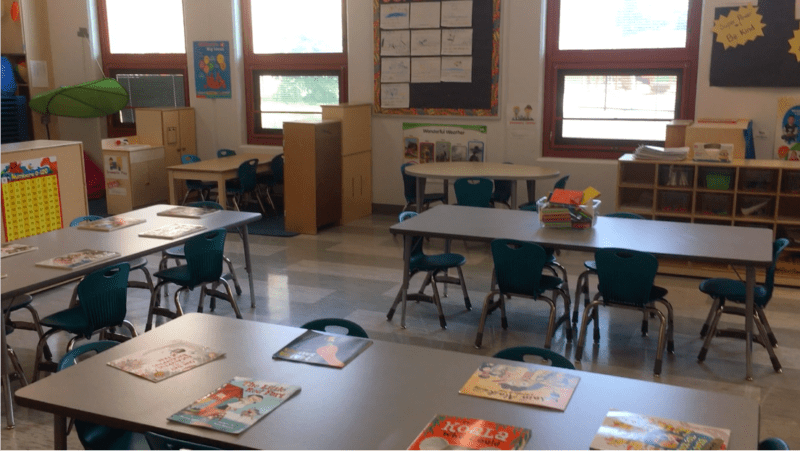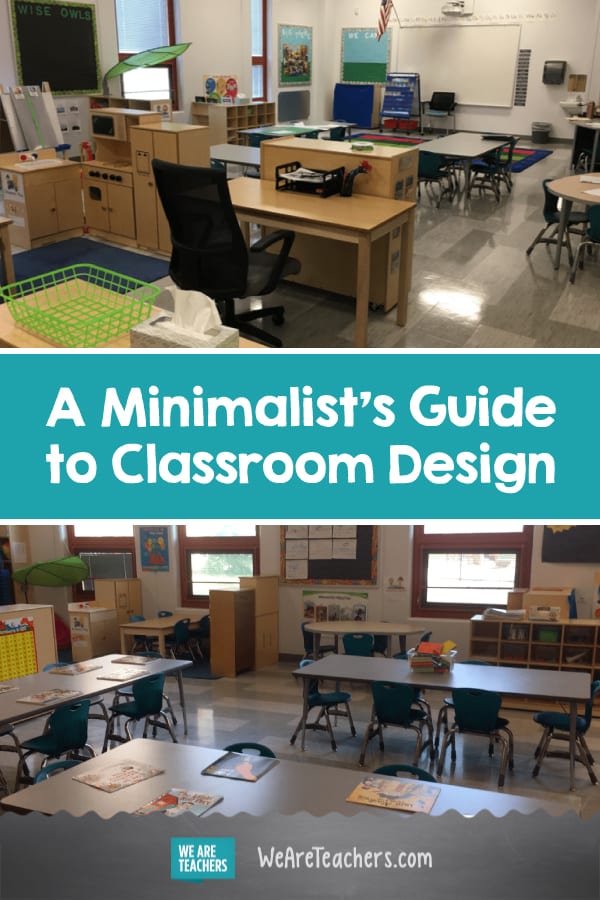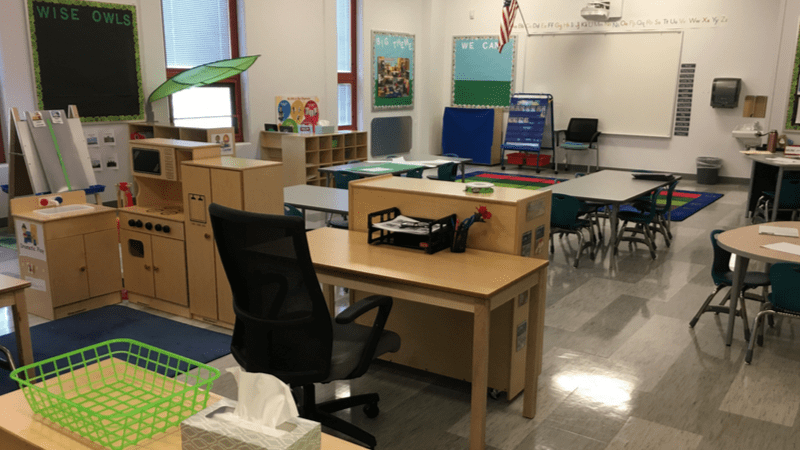Have you ever walked into a classroom and felt seriously overwhelmed? Not just about being back in school, but by the magnitude of anchor charts, posters, and materials that literally cover the room, floor to ceiling (sometimes even on the ceiling!)? In today’s classroom, that seems to be the norm and the expectation. But in my classroom, this just wasn’t possible.
I am, what you would call, a neat freak.
At home, at school, in my car, I just like a clean, organized space. When it comes to setting up and maintaining my classroom, I keep it neat all year. But I noticed that my classroom was different from others, especially as I heard comments colleagues made about it. For example, when our custodians repeatedly claim that I have the cleanest room in the building. Or when teachers visit my classroom and say, “Wow, your room feels so open” or, “This room just calms me.” It got me thinking, isn’t that what it’s supposed to do? Aren’t our classrooms supposed to feel like a safe, engaging space for students to learn?
My classroom doesn’t look like my fellow teachers’, and I’m okay with that.

A study at University of Salford, UK, explored how various environmental factors in the classroom impact students’ learning and achievement. As researchers examined 153 classrooms across the UK, they considered factors including lights, air, temperature, wall displays, and access to nature. Overall, the study found that the classroom environment played a major role in student learning: that students’ achievement increased when the visual stimuli was at a moderate level and suffered when the classroom environment was overwhelming.
Another study looked at achievement levels of kindergartners placed in either a well-decorated or a sparse classroom. Results showed that the students in the well-decorated classroom not only spent more time distracted from learning, but also performed lower on post assessments than their peers in the sparse room.
If our environment yields such influence over student performance, why the great pressure to post everything? Why are educators constantly told by higher powers to hang up this and display that if we know it’s at the expense of our students’ potential learning?
[contextly_auto_sidebar]
Since this realization, I’ve taken on the title of Aspiring Minimalist Teacher.
I make sure that my classroom assists my teaching by providing an enriching yet calming space for my students to learn. I avoid clutter, clean often, and attempt to keep only the materials I use frequently. Therefore, to aid other aspiring minimalist teachers, I’ve come up with suggestions to help them evaluate their classroom environment and arrange it to best fit their and their students’ needs.
Big furniture should act like a map.
At the beginning of each school year, I start with a clean slate. I move all the furniture to one side of the room, and then start to envision how my classroom would best function. Furniture should create well-defined areas and easily accessible pathways to maneuver around the classroom. Anyone should be able to come to your classroom and see where various learning centers are, how they are used (individual vs. group work), and how to get to them easily. Furniture should not block windows, as they provide students access to nature while they’re inside.
Pick the right colors and don’t overuse them.
Think of a place that calms you. Did you say a beach? Sunset over the mountains? Rolling hills or a starlit night? If those places are calming for you, mimic those colors in your classroom. Natural wood furniture and colors found in nature will bring a serenity to your classroom without looking dull. If you bring more intense color into your classroom, balance it out and have a reason to draw students’ attention to the bolder hue. Too much color or not enough can be distracting to the eye—and a daydreaming child.
Keep what you need; chuck what you don’t.
Teachers are notorious hoarders; we accumulate things over the years, and no matter how often we clean out our room, the stuff never goes away. Now, I’m not telling you to go full Marie Kondo, but really assess what you USE and NEED. If there are activities you like, take a picture and keep it in a binder along with master copies, instead of keeping bulky projects. If there are materials or resources you haven’t used in a year, maybe it’s time to find them another home. Having too many materials makes the space feel smaller and overwhelming. For the items you do keep, find them organized homes in bins or inside cabinets to diminish the cluttered look.
Clean off your desk!
This one also blew my colleagues’ minds. When I leave school, EVERY DAY, I leave my desk completely clean. Yes, nothing on it but a clipboard with my lessons for the next day. Crazy, I know. But sometimes that clutter gets to be too much for you, and your students, to overcome. Anxiety builds as the layers of papers on your desk do, and your students can feel it too. For me, it was like leaving my day with a clean slate and inversely starting the new day with one too. Visually allowing my space to be neat and organized helped me keep my mind more organized. Whether you have trays for your papers or need to take 10 minutes after class to find your desk, I think it really helps your mental space remain clear.
Reset the classroom each day.
Take the principle from above and now apply it to your students. Your students need to have a clean slate each day too, and that means coming into a clean, tidy classroom. I used to take time after school (seriously 15 minutes, not long) to straighten up tables, put away materials, and hopefully get my materials out and prepped for the next day. When my students came to my class, they knew what to do and where to go because their class was organized. I know many teachers at the end of the day have procedures where students aid in cleaning the room. That’s a great way to have them help keep the classroom organized and also declutter their minds.
Adopt the one-month-on-the-wall rule.
This topic gets a lot of talk from principals, districts reps, and mentor/coaches. But believe it or not, our students’ achievements and our teacher efficiency is not measured by the number of items hanging on our walls. I try to only put items on my walls that are meaningful to my students and their learning at that moment—no fluff, no extras, just what’s important. Thus, most items stay on my walls for no longer than a month (the usual length of our units). Usually, I try to change out student work weekly. I know that might sound crazy, but I felt that if it wasn’t in the top three things I was teaching that week, I didn’t need to display it.
Hopefully, you haven’t been scared off yet and these suggestions get you thinking about your teaching practice and your classroom. As you start your next school year, or semester, think of small changes you can make in your room. How will this benefit my students? How will I be able to tell? How can I make my room work for us, instead of spending hours working on my room? It just takes a few steps in the right direction to start seeing big changes. Happy organizing!
We’d love to hear your thoughts on minimalist classroom design: yea or nay? Come and share in our WeAreTeachers HELPLINE group on Facebook.
Plus, how Pinterest-perfect classrooms get in the way of learning.


